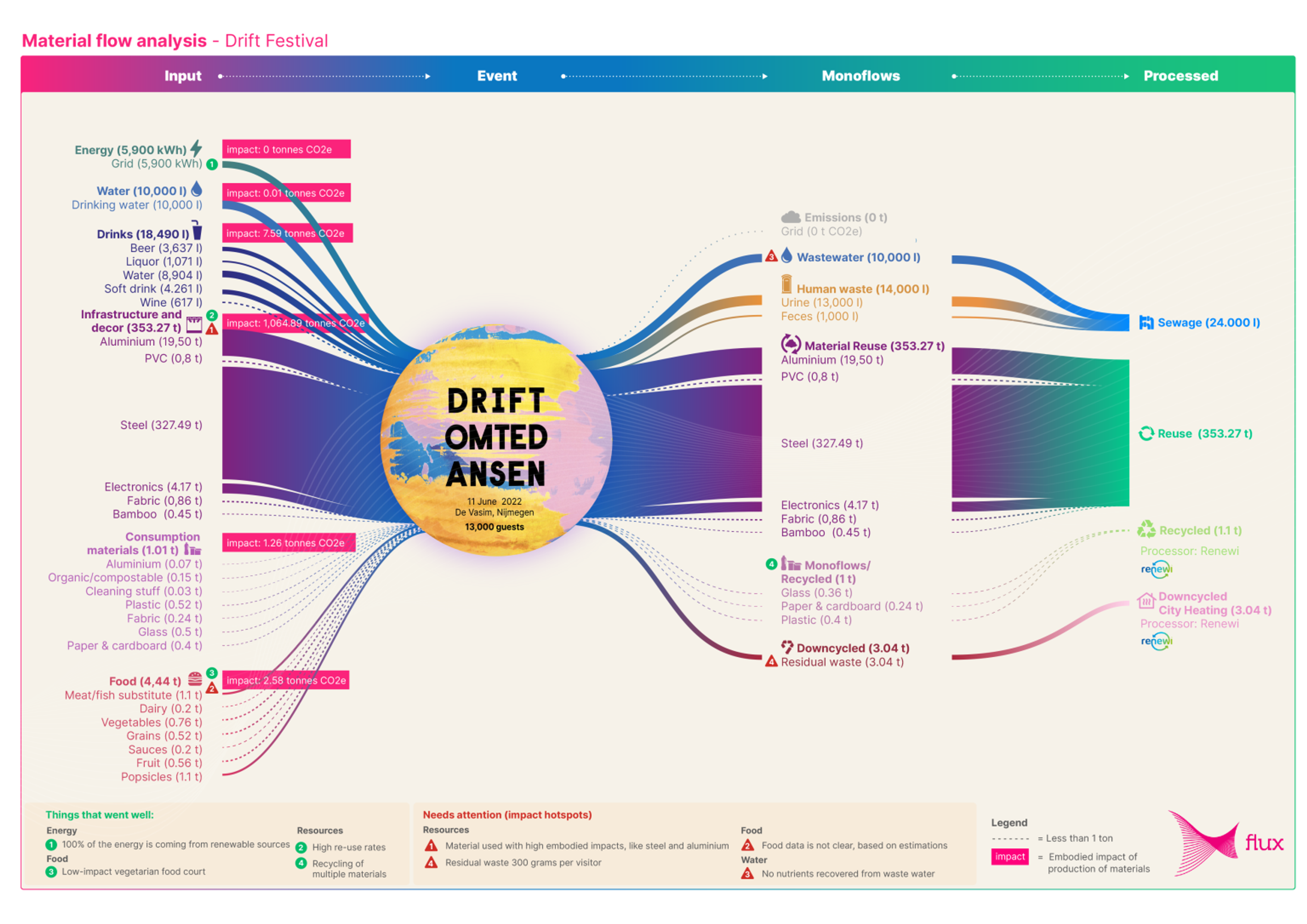
The importance of effective materials and water management in both the cultural sector and nationwide cannot be underestimated. With a growing world population and increasing demand for products and raw materials, we face challenges of climate change, biodiversity loss and pollution. Sustainable material and water management is therefore an increasingly important issue.
This article offers insight into strategies, measurement tools and examples for more sustainable material and water use.
Laws and regulations
The central government is aiming for a circular economy in 2050, in which raw materials are reused and waste disappears. This requires cooperation between governments, companies and organizations. The cultural sector can play an exemplary role in this by dealing more consciously with materials and water, which not only saves costs but also contributes to a sustainable future.
An important step in this transition is the Raw Materials Accord, signed in 2017 by 180 parties from government, business and civil society organizations. This agreement contains agreements to make the Dutch economy less dependent on primary raw materials and smarter with materials. The Circular Materials Plan (CMP), which will replace the current National Waste Management Plan (LAP3) starting in 2025, is a uniform framework for sustainable resource use, waste management and permitting. The CMP helps governments and companies with knowledge and guidelines to further develop and accelerate the circular economy.

Develop strategy on sustainability
There is also a growing urgency in the cultural sector to contribute to a more sustainable future. But how do you tackle this concretely? In this article we look at developing a strategy on sustainability, the resources available to do this and where to find support to actually implement your plans.
Waste analysis and measurability
The first step toward sustainability is understanding your own material use and waste streams. A Material Flow Analysis (MSA) helps determine how raw materials are used and disposed of. The roadmap of VANG Buitenenshuis offers a practical approach in six steps to identify, separate and reduce waste streams more efficiently. It provides:
- Raising awareness about waste prevention and circular economy
- Understanding current waste and resource flows
- Overview of purchased products and raw materials
- A top 10 products that could be purchased smarter or less
- Increased environmental awareness within the organization
- Concrete measures for better waste separation and prevention

Waste Pointers
Unsure where a product belongs in the waste? Milieu Centraal's Waste Separation Guide provides instant answers. By simply entering a product, you get advice on the right way to separate it. This helps improve recycling and contributes to a more sustainable use of raw materials. It is also wise to talk to your waste supplier. Sometimes they have specific requirements, but they can also provide valuable tips on how to separate waste even better. Need advice for waste in the office? The Waste-Free Office Guide offers practical tips and inspiring examples to reduce waste during the procurement, use and disposal phases.
💡 Reading tip: Many sets and costumes end up in storage or as waste after use, while the materials can still be perfectly reused. VANG Buitenenshuis and the Netherlands Association for the Performing Arts (NAPK) examined the current status and opportunities for more reuse in the sector.
Circular working and reuse
To save resources and reduce waste, it is important to work circularly. This means reusing materials as long as possible, minimizing waste and designing products smarter.
The R Ladder
Many events and organizations still operate in a linear fashion: materials are purchased, used and then discarded. A more sustainable alternative is the R-ladder, a model that ranks strategies to use resources more efficiently. Strategies higher up the ladder, save more resources. The higher a strategy ranks on the R-ladder, the more circular the strategy is. The six levels are:
- Refuse and Rethink (avoiding and designing smarter)
- Reduce (less resource use)
- Re-use.
- Repair and Refurbish (extend life)
- Recycling (repurposing raw materials)
- Recover (recover energy from waste).
At Atelier Meer², old banners are upcycled into sustainable bags, aprons, bibs and more.
💡 Reading tip: The Culture Zero Waste Expedition helps cultural institutions reduce and better separate their waste. Research at 60 institutions shows that awareness and smart measures, such as joint waste collection and fewer wastebaskets, are effective. The report emphasizes the importance of circularity in cultural policy for further sustainability.
Sustainable water use
Water is an essential resource, but we often take it for granted that clean drinking water is always available - when this is certainly not the case. NOS reported in early 2025 that the Netherlands may face water shortages around 2030, making conscious and efficient water use increasingly urgent. Cultural organizations and events can respond to this by taking water-saving measures, such as installing water-efficient toilets, collecting and reusing rainwater and using sensor taps to prevent unnecessary water consumption. This not only reduces water consumption, but also saves costs.

At events, installing taps can reduce dependence on plastic bottles, while rainwater can be used for cleanup. In addition, organizations can contribute by purifying water on site and actively preventing local water pollution. Investing in smart water systems not only helps reduce water demand, but also contributes to a sustainable and resilient future. Small adjustments make a big difference for sustainable water management.
💡 Tip: Want to know more? Future Festival Tools collected inspiring examples of cultural events successfully implementing water-saving measures.

Training - Reduce your digital footprint
During this interactive training you will discover the impact of your online activities and get practical tools to reduce it.